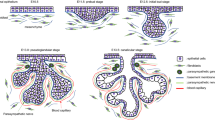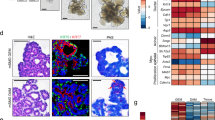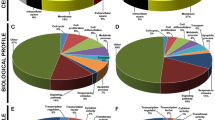Abstract
Amino acids have various physiological activities that influence processes such as intestinal regeneration, EGF secretion, protein synthesis, and cell growth. Salivary glands are exposed to nutrients that influence their proliferation and regeneration. Glycine is included in saliva in large quantities and reportedly has important roles in antibacterial activities and the inhibition of tumor growth and as a precursor of nucleotide synthesis in cell proliferation. We have investigated the effects of glycine on the proliferation and differentiation of salivary glands by using mouse salivary-gland-derived progenitor (mSGP) cells. In cultures of mSGP cells, cell proliferation is suppressed in the presence of glycine, whereas it is promoted by its removal. Glycine promotes three-dimensional formations of mSGP cells, which are negative for immature markers and positive for differentiation markers. In cell-cycle analysis, cell-cycle progression is delayed at the S-phase by glycine supplementation. Glycine also suppresses the phosphorylation of p42/p44MAPK. These results suggest that glycine suppresses the proliferation and promotes the differentiation of mSGP cells, and that it has inhibitory effects on growth factor signaling and cell-cycle progression. Glycine might therefore be a physiological activator that regulates the proliferation and differentiation of salivary glands.




Similar content being viewed by others
References
Amano A, Fujiwara T, Nagata H, Kuboniwa M, Sharma A, Sojar HT, Genco RJ, Hamada S, Shizukuishi S (1997) Prophyromonas gingivalis fimbriae mediate coaggregation with Streptococcus oralis through specific domains. J Dent Res 76:852–857
Cardoso WV, Lu J (2006) Regulation of early lung morphogenesis: questions, facts and controversies. Development 133:1611–1624
Dangi S, Chen FM, Shapiro P (2006) Activation of extracellular signal-regulated kinase (ERK) in G2 phase delays mitotic entry through p21CIP1. Cell Prolif 39:261–279
Delia D, Goi K, Mizutani S, Yamada T, Aiello A, Fontanella E, Lamorte G, Iwata S, Ishioka C, Krajewski S, et al (1997) Dissociation between cell cycle arrest and apoptosis can occur in Li-Fraumeni cells heterozygous for p53 gene mutations. Oncogene 14:2137–2147
Denny PC, Ball WD, Redman RS (1997) Salivary glands: a paradigm for diversity of gland development. Crit Rev Oral Biol Med 8:51–75
Drucker DJ, Erlich P, Asa SL, Brubaker PL (1996) Induction of intestinal epithelial proliferation by glucagon-like peptide 2. Proc Natl Acad Sci USA 93:7911–7916
Gentile M, Latonen L, Laiho M (2003) Cell cycle arrest and apoptosis provoked by UV radiation-induced DNA damage are transcriptionally highly divergent responses. Nucleic Acids Res 31:4779–4790
Ghavanini AA, Mathers DA, Puil E (2005) Glycinergic inhibition in thalamus revealed by synaptic receptor blockade. Neuropharmacology 49:338–349
Ghigo E, Bartolotta E, Imperiale E, Bellone J, Cardinale G, Aimaretti G, Valetto MR, Cherubini V, Maccario M, Cocchi D, et al (1994) Glucagon stimulates GH secretion after intramuscular but not intravenous administration. Evidence against the assumption that glucagon per se has a GH-releasing activity. J Endocrinol Invest 17:849–854
Goldberg AL, Chang TW (1978) Regulation and significance of amino acid metabolism in skeletal muscle. Fed Proc 37:2301–2307
Harper AE, Miller RH, Block KP (1984) Branched-chain amino acid metabolism. Annu Rev Nutr 4:409–454
Hisatomi Y, Okumura K, Nakamura K, Matsumoto S, Satoh A, Nagano K, Yamamoto T, Endo F (2004) Flow cytometric isolation of endodermal progenitors from mouse salivary gland differentiate into hepatic and pancreatic lineages. Hepatology 39:667–675
Ichinohe A, Kure S, Mikawa S, Ueki T, Kojima K, Fujiwara K, Iinuma K, Matsubara Y, Sato K (2004) Glycine cleavage system in neurogenic regions. Eur J Neurosci 19:2365–2370
Jones SM, Kazlauskas A (2001) Growth factor-dependent signaling and cell cycle progression. Chem Rev 101:2413–2423
Larsen WJ (2001) Human embryology, 3rd edn. Churchill Livingstone, Edinburgh
Larsen M, Hoffman MP, Sakai T, Neibaur JC, Mitchell JM, Yamada KM (2003) Role of PI 3-kinase and PIP3 in submandibular gland branching morphogenesis. Dev Biol 255:178–191
Lianguzova MS, Chuykin IA, Nordheim A, Pospelov VA (2007) Phosphoinositide 3-kinase inhibitor LY294002 but not serum withdrawal suppresses proliferation of murine embryonic stem cells. Cell Biol Int 31:330–337
Lieberthal W, Triaca V, Koh JS, Pagano PJ, Levine JS (1998) Role of superoxide in apoptosis induced by growth factor withdrawal. Am J Physiol 275:F691–F702
Liu Y, Martinez L, Ebine K, Abe MK (2008) Role for mitogen-activated protein kinase p38 alpha in lung epithelial branching morphogenesis. Dev Biol 314:224–235
Liu Y, Wong TP, Aarts M, Rooyakkers A, Liu L, Lai TW, Wu DC, Lu J, Tymianski M, Craig AM, et al (2007) NMDA receptor subunits have differential roles in mediating excitotoxic neuronal death both in vitro and in vivo. J Neurosci 27:2846–2857
Maezono K, Mawatari K, Kajiwara K, Shinkai A, Maki T (1996) Effect of alanine on D-galactosamine-induced acute liver failure in rats. Hepatology 24:1211–1216
Matsumoto S, Okumura K, Ogata A, Hisatomi Y, Sato A, Hattori K, Matsumoto M, Kaji Y, Takahashi M, Yamamoto T, et al (2007) Isolation of tissue progenitor cells from duct-ligated salivary glands of swine. Cloning Stem Cells 9:176–190
Meloche S, Pouyssegur J (2007) The ERK1/2 mitogen-activated protein kinase pathway as a master regulator of the G1- to S-phase transition. Oncogene 26:3227–3239
Nam HJ, Kim S, Lee MW, Lee BS, Hara T, Saya H, Cho H, Lee JH (2008) The ERK-RSK1 activation by growth factors at G2 phase delays cell cycle progression and reduces mitotic aberrations. Cell Signal 20:1349–1358
Okumura K, Nakamura K, Hisatomi Y, Nagano K, Tanaka Y, Terada K, Sugiyama T, Umeyama K, Matsumoto K, Yamamoto T, Endo E (2003) Salivary gland progenitor cells induced by duct ligation differentiate into hepatic and pancreatic lineages. Hepatology 38:104–113
Pardee AB (1974) A restriction point for control of normal animal cell proliferation. Proc Natl Acad Sci USA 71:1286–1290
Pardee AB (1989) G1 events and regulation of cell proliferation. Science 246:603–608
Peranzoni E, Marigo I, Dolcetti L, Ugel S, Sonda N, Taschin E, Mantelli B, Bronte V, Zanovello P (2007) Role of arginine metabolism in immunity and immunopathology. Immunobiology 212:795–812
Rees DD, Monkhouse JE, Cambridge D, Moncada S (1998) Nitric oxide and the haemodynamic profile of endotoxin shock in the conscious mouse. Br J Pharmacol 124:540–546
Reynolds JV, Daly JM, Shou J, Sigal R, Ziegler MM, Naji A (1990) Immunologic effects of arginine supplementation in tumor-bearing and non-tumor-bearing hosts. Ann Surg 211:202–210
Rose ML, Cattley RC, Dunn C, Wong V, Li X, Thurman RG (1999a) Dietary glycine prevents the development of liver tumors caused by the peroxisome proliferator WY-14,643. Carcinogenesis 20:2075–2081
Rose ML, Madren J, Bunzendahl H, Thurman RG (1999b) Dietary glycine inhibits the growth of B16 melanoma tumors in mice. Carcinogenesis 20:793–798
Sakata Y, Owada Y, Sato K, Kojima K, Hisanaga K, Shinka T, Suzuki Y, Aoki Y, Satoh J, Kondo H, et al (2001) Structure and expression of the glycine cleavage system in rat central nervous system. Brain Res Mol Brain Res 94:119–130
Sato A, Okumura K, Matsumoto S, Hattori K, Hattori S, Shinohara M, Endo F (2007) Isolation, tissue localization, and cellular characterization of progenitors derived from adult human salivary glands. Cloning Stem Cells 9:191–205
Shackelford RE, Kaufmann WK, Paules RS (1999) Cell cycle control, checkpoint mechanisms, and genotoxic stress. Environ Health Perspect 107 (Suppl 1):5–24
Wheatley DN, Scott L, Lamb J, Smith S (2000) Single amino acid (arginine) restriction: growth and death of cultured HeLa and human diploid fibroblasts. Cell Physiol Biochem 10:37–55
Wilmore DW, Smith RJ, O’Dwyer ST, Jacobs DO, Ziegler TR, Wang XD (1988) The gut: a central organ after surgical stress. Surgery 104:917–923
Acknowledgment
We thank AJINOMOTO for assistance with the supply of δ media and amino-acid-free medium, Yuichirou Hisatomi for assistance with the supply of mouse SGP cells, Tatsuko Kubo for assistance with the preparation of tissue for histology, and Kaede Yanagida and Dr. Kevin Boru for assistance with writing the manuscript.
Author information
Authors and Affiliations
Corresponding author
Additional information
This work was supported in part by the Advanced Education Program for Integrated Clinical, Basic and Social Medicine, Graduate School of Medical Sciences, Kumamoto University (Support Program for Improving Graduate School Education, MEXT, Japan).
Electronic supplementary material
Below is the link to the electronic supplementary material.
Supplementary Fig. 1
Apoptosis analysis by flow cytometry. The number of cleaved-caspase positive cells and propidium ionide (PI) positive cells was determined by flow cytometry after treatment of mSGP cells with glycine. (a) PI positive cells (b) Cleaved-caspase positive cells. The number of both the cleaved-caspase positive cells and PI positive cells remained unaffected in either the presence or absence of glycine. (GIF 48.0 KB)
Rights and permissions
About this article
Cite this article
Nakamura, Y., Matsumoto, S., Mochida, T. et al. Glycine regulates proliferation and differentiation of salivary-gland-derived progenitor cells. Cell Tissue Res 336, 203–212 (2009). https://doi.org/10.1007/s00441-009-0767-0
Received:
Accepted:
Published:
Issue Date:
DOI: https://doi.org/10.1007/s00441-009-0767-0




